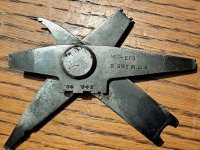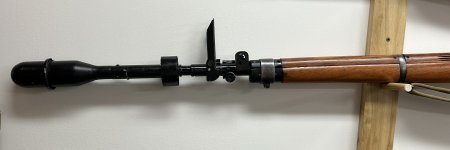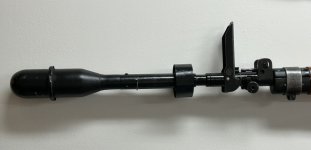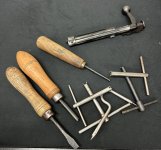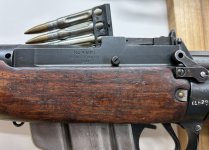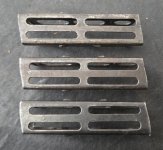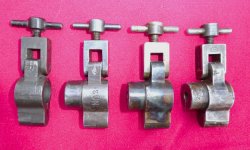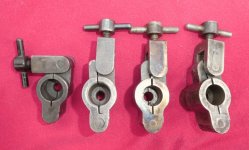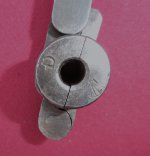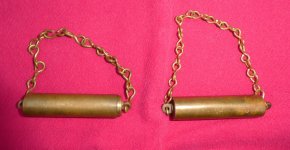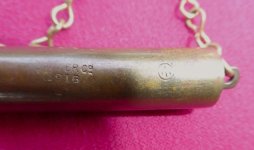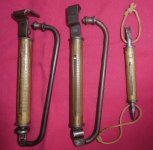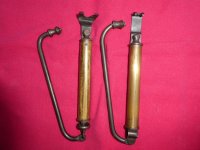I thought it would be fun to get ppl to post some Lee Enfield-related "gunroom artifacts" people have lying around that aren't often shown here on the site. I have a TON of stuff like this, obscure tools, rare bayonets, various bits of uncommon webbing, grenade firing adaptors, etc. - and for whatever reason, we get lots of gun pics, but very few accompanying bits.
So how a bout a little show and tell? I can start us off with a couple items you don't see every day. First, here is a 1940 aiming instruction sight for the SMLE, made before the adoption of the No.4 rifle - these really only work with the barrel mounted leaf sights. They were clipped over the rear handguard, and allowed a musketry instructor to see what the recruit's sight picture was, so he could correct any poor soul that insisting on aiming like Grandpa taught them as opposed to the King's approved way of doing things. The device can be moved up and down to match the issue rear sight elevation all the way out to 2000 yards.
These are a clever bit of kit with a semi-transparent piece of tempered glass inserted in the apparatus, so the recruit could aim through it, while the instructor could see the same line of sight, off to the side, as a reflection. I've tried to post a photo of this sight picture, though hard to do with a phone camera!



And here's another uncommon item. This is a very early production Singer Manufacturing No.4MkI cruciform bayonet. These were not made very long before production switched to the ubiquitous spike bayonets (No.4 Mk II, II*, and III).


Let's see what else is lurking out there! If it's weird, wonderful, associated with the Lee Enfield and you have photos - what are you waiting for? Post it here.
So how a bout a little show and tell? I can start us off with a couple items you don't see every day. First, here is a 1940 aiming instruction sight for the SMLE, made before the adoption of the No.4 rifle - these really only work with the barrel mounted leaf sights. They were clipped over the rear handguard, and allowed a musketry instructor to see what the recruit's sight picture was, so he could correct any poor soul that insisting on aiming like Grandpa taught them as opposed to the King's approved way of doing things. The device can be moved up and down to match the issue rear sight elevation all the way out to 2000 yards.
These are a clever bit of kit with a semi-transparent piece of tempered glass inserted in the apparatus, so the recruit could aim through it, while the instructor could see the same line of sight, off to the side, as a reflection. I've tried to post a photo of this sight picture, though hard to do with a phone camera!



And here's another uncommon item. This is a very early production Singer Manufacturing No.4MkI cruciform bayonet. These were not made very long before production switched to the ubiquitous spike bayonets (No.4 Mk II, II*, and III).


Let's see what else is lurking out there! If it's weird, wonderful, associated with the Lee Enfield and you have photos - what are you waiting for? Post it here.






















































